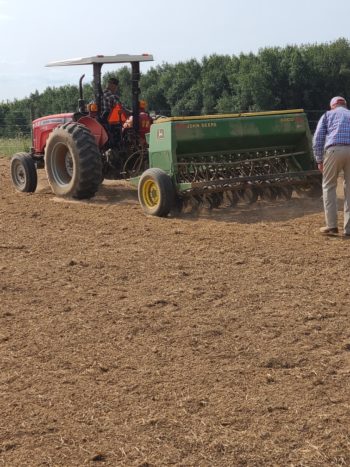

Dr. Gary Bates
Department Head and Professor, Plant Sciences
Director, UT Beef & Forage Center
P: 865-974-7324
There has always been a lot of travel with my job as forage specialist. It is not uncommon to start one morning in East TN and spend the evening in West TN. Often, I travel by myself, but sometimes I get to travel with someone else. One of those people is my good friend Dr. Neal Schrick, department head of Animal Science. One of the unique things about traveling with Neal is that he doesn’t particularly like traveling on the interstate. If possible, he likes to take back roads that he calls shortcuts. He swears they cut time off the trip. I call them longcuts, because I am not sure if they save time or if maybe they take a little longer. Regardless, if he is driving, we go his way. I just make sure to leave a little early, so we have time for his shortcut.
This is one of those things that is funny, and it is good to laugh about. But I wonder how many things in your operation you do to try and save time but in the long run actually cost more time. One good example is in planting practices. I get questions every fall about the steps in planting. More specifically, I get questions about which steps can be left out and still get a good stand of grass.
For instance, sometimes you might want to plant into a sod that hasn’t been killed. It takes time to get the sprayer ready, spray the field, then wait for the herbicide to work. Instead, you want to clip the field close and drill directly into the sod. You have just decreased your chances of success, since the emerging seedlings will have to compete against existing plants. It might not result in a total stand failure, but you might end up with a less than full stand. The result will be weed pressure, herbicide sprays to control those weeds, and possibly another seeding next year to thicken the stand. Longcut.
What about your soil fertility program? The best program is to soil test, then base lime and fertilizer applications on those results. You can know the soil pH, and apply lime to keep the pH about 6.0, then apply nutrients to meet your crop’s needs. But maybe you don’t take time to soil test, and just apply a couple hundred pounds of triple 19. Over the course of a couple of years you may be dropping your pH, so that now some of the nutrients you are applying are tied up in the soil. You take a soil test when the plants aren’t growing like you want, find out your pH is very low, apply lime, then have to wait a year or two for the pH to adjust back to above 6.0. Soil testing every third year can prevent this. But you took the longcut.
Another good example is in your grazing management program. You have big pastures and let the cows continuously graze them. It is easier to do that than to split pastures up into smaller paddocks and graze for shorter periods, maybe 4-7 days, then move cattle to a new paddock and let the grazed one regrow. Too much work to put up temporary fencing and move cattle each week. Instead, you overgraze your pastures in the late spring and summer, which causes stand loss. Then you have to come back in fall to reseed. But you can’t keep the cattle off the big pasture, so you drill directly into the pasture. See the earlier example. Longcut.
Here’s the thing about longcuts. They can still get you to where you want to go. It just takes more time and resources. You may not even know it takes longer until you compare it to another route. Evaluate what you are doing to make sure you are on the shortest route instead of one that might seem easier but actually takes longer.
